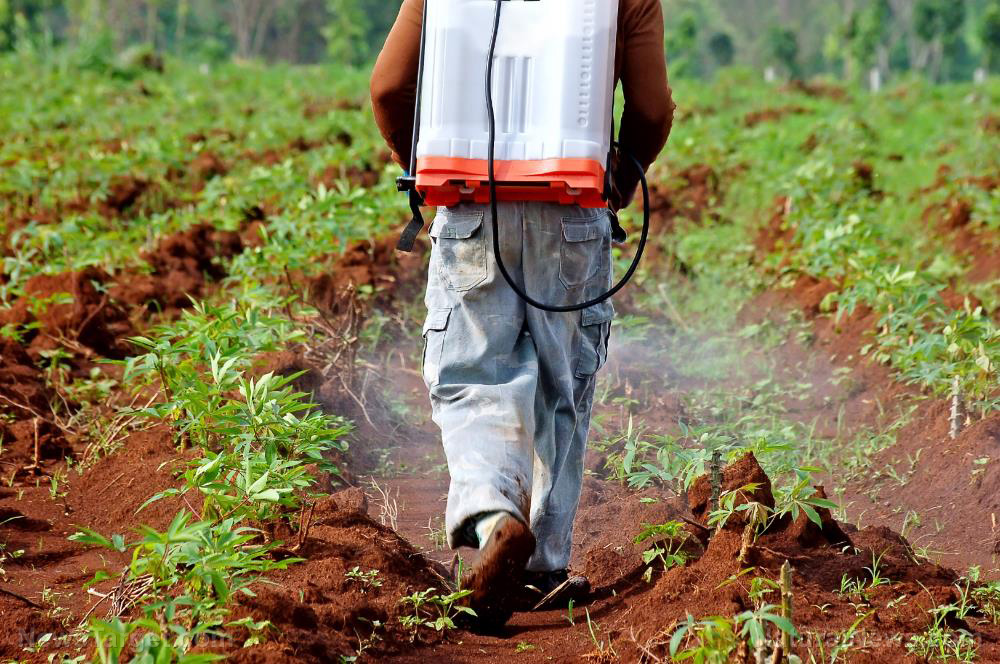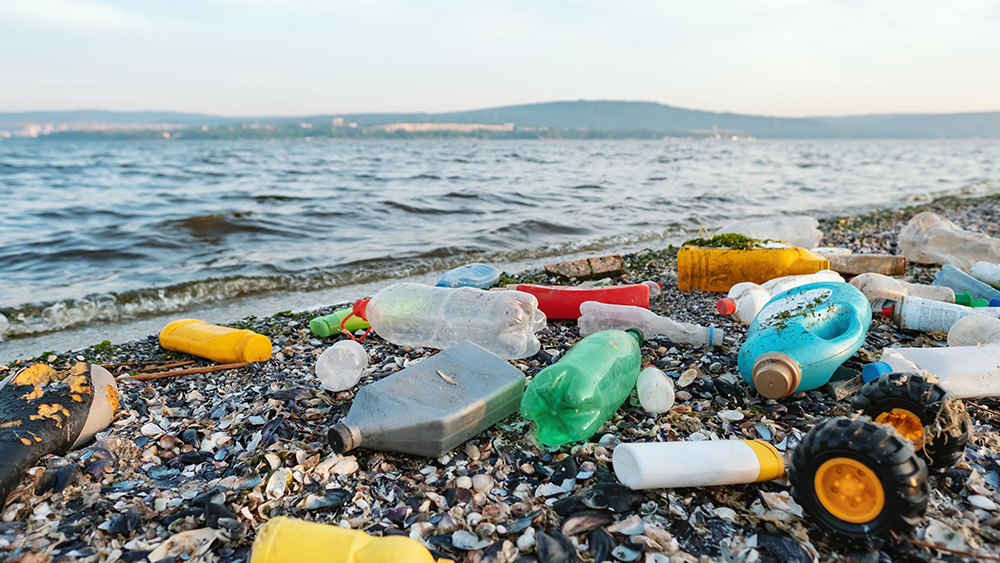Blueberries and potatoes join EWG’s “Dirty Dozen”: The dirty truth about pesticides lurking in produce
06/30/2025 / By Olivia Cook

- In 2025, the EWG added blueberries and potatoes to its “Dirty Dozen” list of produce with the highest levels of pesticide residue, even after washing and peeling.
- Blueberries were found to be contaminated with cypermethrin, a possible carcinogen linked to nerve damage and allergic reactions. Potatoes had chlorpropham, a chemical banned in Europe due to potential risks like blood changes and thyroid disruption.
- Despite mounting health concerns, U.S. regulators still permit the use of these chemicals in conventional farming. Critics argue that the safety limits set by the Environmental Protection Agency (EPA) are outdated and don’t reflect current scientific understanding of chronic illness and endocrine science.
- To reduce exposure, experts recommend choosing organic versions of Dirty Dozen foods when possible. You can also consult EWG’s “Clean 15” list for safer produce picks, like asparagus, avocados, bananas, cabbage, cauliflower, kiwi, mangoes, mushrooms, papaya, pineapple and sweet corn.
- Scientists warn that long-term, low-pesticide exposure may be especially harmful during pregnancy and childhood, with potential links to cancer, hormone issues and neurodevelopmental problems in kids.
You reach for a handful of blueberries or mash up some potatoes for dinner – classic choices in a health-conscious diet. But these two seemingly innocent staples have landed on the Environmental Working Group’s (EWG) infamous “Dirty Dozen” list.
Every year, EWG releases its “Shopper’s Guide to Pesticides in Produce,” which ranks fruits and vegetables based on how much pesticide residue they contain – even after being scrubbed, washed or peeled. This isn’t fear-mongering. It is based on data from more than 53,000 samples of conventionally grown produce from the U.S. Department of Agriculture (USDA).
Blueberries and potatoes entered the “Dirty Dozen” this year at No. 11 and No. 12, respectively. Blueberries were found to contain residues from four or more pesticides per sample, with over half showing traces of cypermethrin, a chemical linked to neurological issues and classified by the EPA as a possible carcinogen. Potatoes weren’t far behind, showing residues of chlorpropham in 90 percent of samples. That’s a chemical banned in the European Union since 2019 due to its possible effects on the blood and thyroid.
Even after produce is washed, pesticide residues can remain, according to Dr. Alexis Temkin, a toxicologist at EWG. She emphasizes that this is especially important for families trying to reduce their children’s exposure to potentially harmful chemicals in food.
Why are pesticides still being used?
The answer lies in a complicated tug of war between public health and agricultural industry interests. While U.S. regulators like EPA do set limits for pesticide residue in food, critics argue that these legal limits don’t necessarily mean safe limits.
Consumer Reports’ food safety team recently reviewed seven years of USDA data and found something alarming: 20 percent of U.S. produce had pesticide residue levels that pose significant health risks, particularly to vulnerable populations, like children and pregnant women.
Even worse, some of these chemicals are technically not supposed to be in certain foods at all – like acephate, a pesticide banned for use on green beans since 2011. Yet, it keeps showing up in testing. And imported produce, especially from countries, like Mexico, often has higher contamination rates.
According to Dr. Michael Hansen, a senior scientist of Consumer Reports, the EPA’s current method of assessing pesticide risk is outdated and does not align with the latest scientific understanding. He notes that it fails to account for cumulative exposure or the long-term effects these chemicals can have, particularly on hormones and the nervous system.
The chemicals hiding in your produce
The problem goes beyond just cypermethrin and chlorpropham. Here are some of the repeat offenders showing up in America’s most popular fruits and vegetables:
Acephate and its toxic breakdown product, metamidophos, have been found on green beans, even though their use has been banned in the U.S. for over a decade. Methamidophos levels in some samples were found to be over 100 times what food safety scientists consider safe.
Chlorpyrifos, an organophosphate, has been banned for residential use since 2000, but residues have persisted in some imported products. It’s been strongly linked to brain development delays in children. (Related: Federal court says EPA must ban pesticide linked to brain damage in children.)
Per- and polyfluoroalkyl substances or PFAS (“forever chemicals”) are also increasingly found in agricultural chemicals. These bioaccumulate in the body, resist breaking down and are associated with cancer, hormonal interference and immune suppression.
Another organophosphate pesticide, phosmet, is showing up in blueberries and other fruits. Once rarely seen in consumer testing, it is now a major contributor to toxicity. Phosmet has been linked to neurological damage and is part of a class of chemicals associated with developmental issues in children.
Small exposures to these pesticides (and then some) over time can add up, especially when you’re eating these foods regularly or feeding them to young kids whose bodies are still developing. Studies have linked chronic pesticide exposure to: Endocrine disruption (hormonal imbalances), fertility issues, increased cancer risk, increased risk of neurodegenerative diseases, like Parkinson’s and lowered IQ and developmental delays in children.
And while some argue that most produce still contains pesticide levels below legal thresholds, that is cold comfort if those households are outdated or too lenient.
Here’s how you can protect yourself and your family without breaking the bank:
- Keep the EWG Shopper’s Guide bookmarked or in your bag. It’s updated annually and free to access.
- Shop seasonally and locally. Farmers’ markets may offer produce with fewer or no synthetic pesticides. Don’t be afraid to ask how their produce is grown.
- Swap smart. If you love blueberries, try organic freeze-dried blueberries, often sold cheaper and are just as nutritious. If you need potatoes, try sweet potatoes that tend to have fewer pesticide residues.
- Wash and peel, but know it is not foolproof. Washing and peeling help but residues often linger. Still, it is worth doing to reduce surface chemicals and bacteria.
Dr. Alexa Friedman, a scientist at EWG, explains that the goal is not to discourage people from eating produce, but rather to help them make informed choices by selecting the “cleanest” options available.
Always remember that all pesticides are deadly. Watch this video.
This video is from the Health Ranger Report channel on Brighteon.com.
More related stories:
Pesticides making America STUPID: Agricultural chemicals found to lower the IQ in children.
Chemicals in organophosphate pesticides cause brain damage: Study.
Study finds pesticide exposure leads to 41 percent higher risk of miscarriage.
Sources include:
Submit a correction >>
Tagged Under:
This article may contain statements that reflect the opinion of the author




















